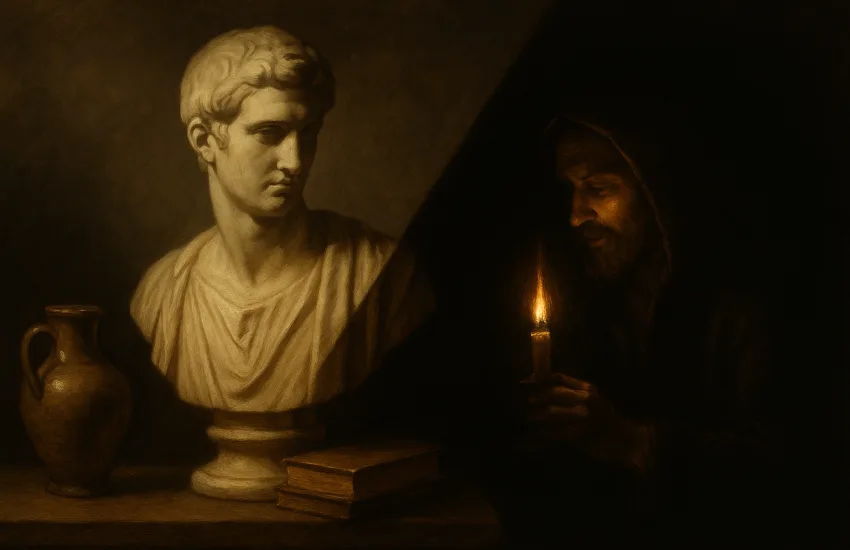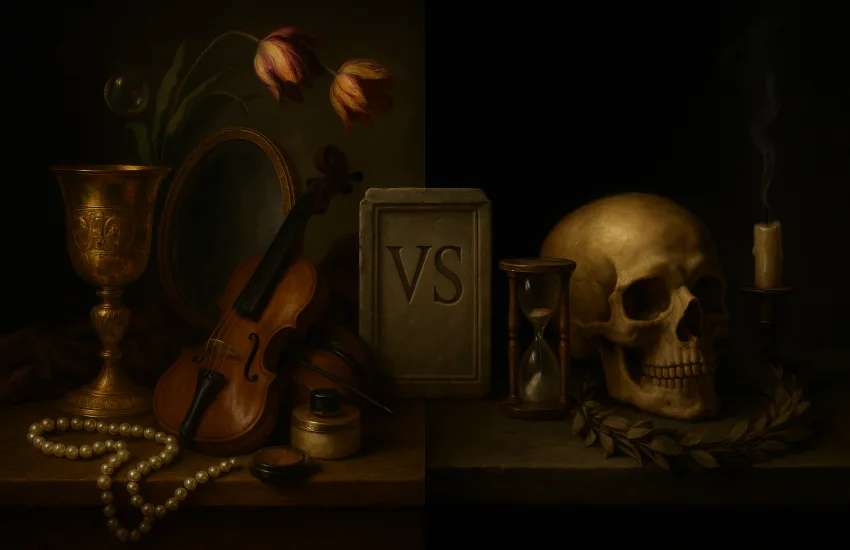A Life Traveled for Art: Paul Gauguin
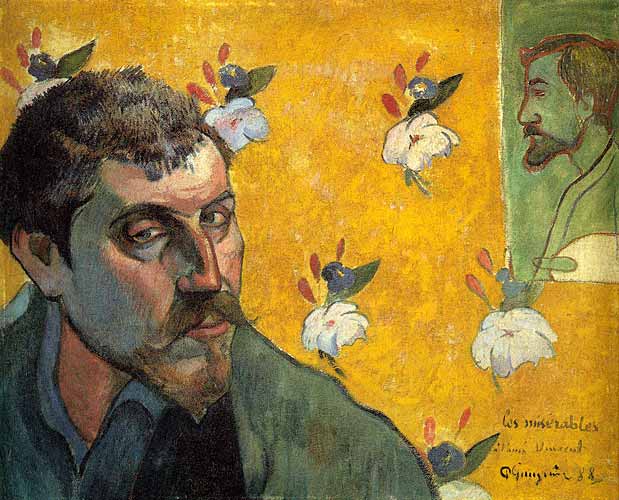
Paul Gauguin, who was born in Paris in 1848, is a painter whose works are evaluated in the post-impressionist period and shaped the art of the 20th century with the new techniques and ideas he developed.
His family, who were not satisfied with the administration in the turbulent France of the period, decided to go to Peru when Paul was just 1 year old, taking their children. During the cruise, his father dies. After staying in Peru for 5-6 years, they return to Paris. This life he lived in South America as a young child is perhaps the most important factor that shaped his art and life in the following years. From that day on, the idea of traveling the world, going to exotic places will never go out of his mind.
Gauguin, who started working on a ship when he was 16, travels across the oceans across the world for 6 years. Then, in 1871, he returned to Paris and started to work in the stock exchange. She later gets married. He has a well-earned job and family life. At that time, he bought the works of impressionist painters and started collecting them. This is where his interest in painting begins. In other words, Gauguin is not a painter who grew up with painting since his childhood. When this adventure, which started as a hobby at a late age, becomes the meaning of his life, he will even quit his job in the stock market.
A painting he made in 1876 is accepted to the “Salon”, which was considered the most important exhibition by art circles at that time. This event also attracts the attention of impressionist painters. The same year, he meets Camille Pisarro. With the influence of the environment he entered, the works he gave in this first period are in an impressionist style both in terms of composition and technique. He participated in the exhibitions of the Impressionists from 1879 to 1886.


Gauguin, who quit his job in 1883 to fully devote himself to painting, begins to suffer serious economic difficulties. He becomes unable to even take care of his family. His wife goes to her own family with her children. Gauguin, lonely and exhausted by modern art circles, comes to the conclusion that Paris no longer has anything to add to himself and to his paintings. He believes that European art is imitative and lacks symbolic meanings. He is interested in naturalness, primitiveness and the mystical symbolism of Asian and African arts. His mind is still in exotic countries that he can not see and forget in his childhood. So he takes his first journey. In 1886 he went to Pont Aven, a small town in France on the Atlantic Ocean. Here he lays the foundations of his unique style. They start using a new technique with his friend Emile Bernard. While the compositions and definable forms are neglected in the impressionist theory, Gauguin et al. Prefer to paint identifiable two-dimensional objects with solid, vibrant colors and increase their determination with thick black contours.
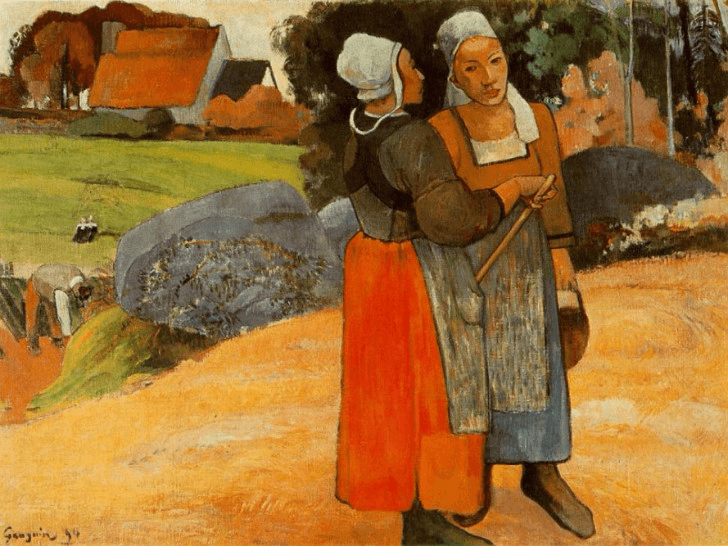
This new style is called “cloissonism” by an art critic. As the best known example of this style, Gauguin’s “Yellow Jesus” picture is shown.
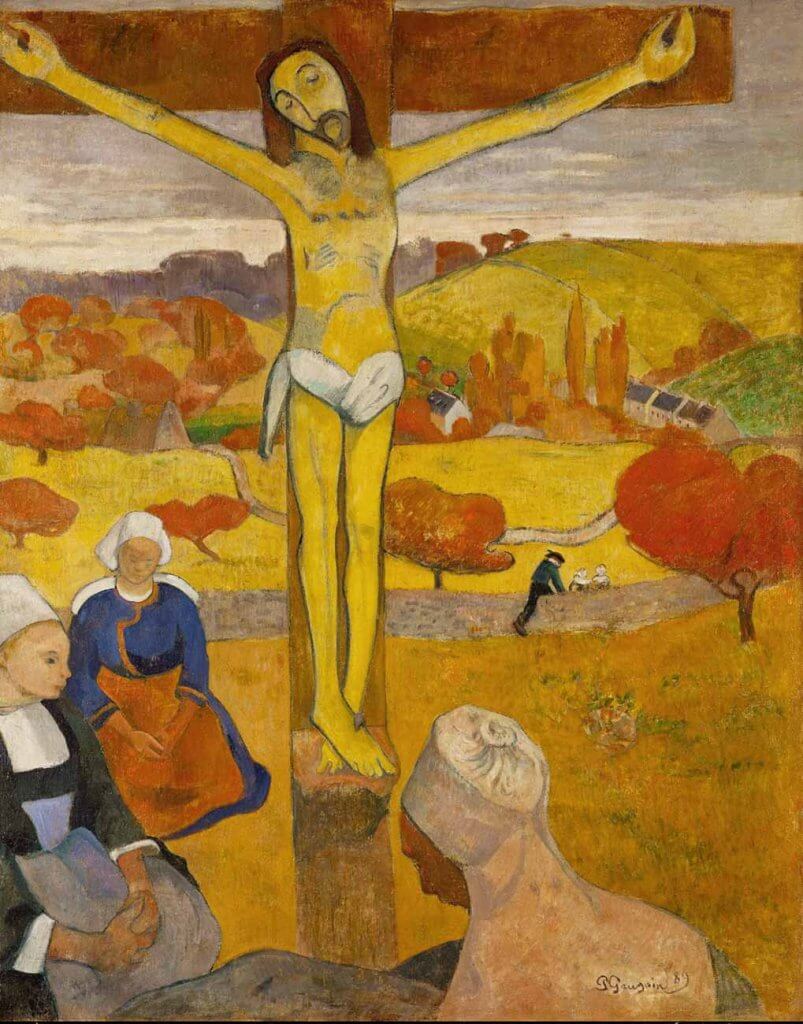
In 1887, they went to Panama and then to the Martinique Islands with his friend Charles Laval, whom he met in Pont Aven. Here Gauguin mingles with the locals and paints their daily life and the tropical vegetation of the island in vivid colors.
“Art is an abstraction; extract it from nature.” -Paul Gauguin


Theo Van Gogh, who was interested in Gauguin’s paintings, introduced him to his brother Vincent Van Gogh. In 1888, Van Gogh invited Gauguin to his house in Arles to paint together. The use of colors by these two painters is quite similar. Both are considered in the post-impressionist period. Over time, conflicts begin to arise between friends who have worked together for two months. In fact, it is said that Van Gogh cut off his ear because of an argument between the two.
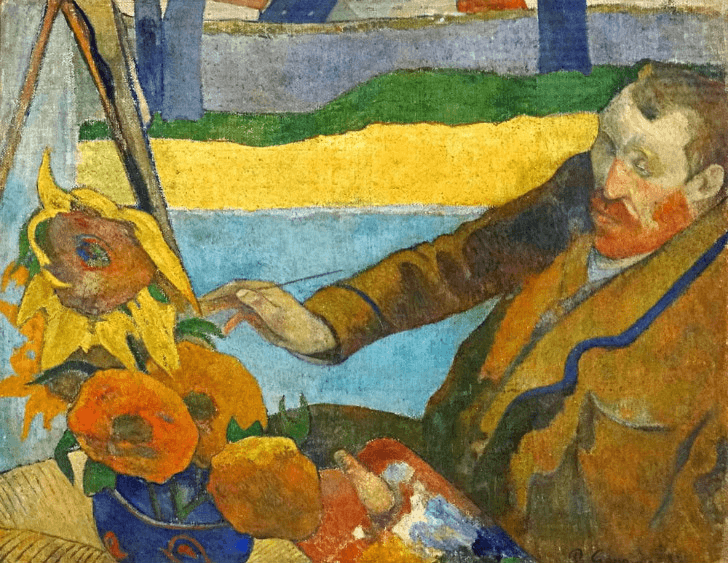
Gauguin’s work “The Image After the Sermon: Jacob’s Struggle with the Angel”, drawn in 1888, is an important turning point in his career. The painting, which has an intense symbolic narrative with the story taken from the Genesis section of the Bible, symbolizes the painter’s transition from impressionism as a style to syntheticism.
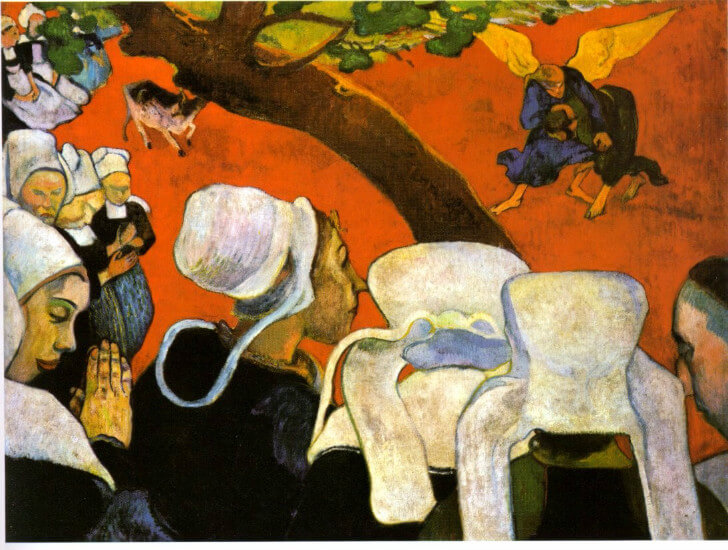
The artist, who returns to Paris after his travels, stays there for a while due to his poor health and attends meetings with the artists of the period. However, this crowd, tired of the flashy places, set out for a new adventure in search of a new adventure, to Tahiti …
Tahiti is a small French colony island in the south of the Pacific Ocean. The artist initially stayed in the capital city of Papetee for a while, but in search of a more natural and primitive life, he went to the far corners of the island and started to live with the locals. He has always been one of the leading names of primitivism by taking this life as the subject of his paintings. Today, he made many of his paintings in Tahiti that we understand at first glance as Gauguin. Here we see Gauguin, who married a very young girl named Teha’amana (Tehura), using her as a model in many of his paintings.



The painter also described his memories in Tahiti, the life of the indigenous people in the book “Noa Noa” he wrote.
He goes to Paris several times due to his health problems and lack of money. He opened his first exhibition in Paris in 1893, but art circles, whose beauty perceptions consist of elegant, modern women, find Gauguin’s style rude.
He goes to Tahiti again in 1895. Despite his severe health problems, he spends a few years very productive in terms of painting. With the death of his daughter Aline in 1897, he fell into a serious depression and even attempted suicide by drinking arsenic, but he could not succeed. Due to his full but troubled life, Gauguin obviously begins to think a lot and question life. As a result of this process in 1898, one of his most important works, “Where Do We Come From? What are we? Where are we going?” Makes the table. For this painting, he said: “I wanted to die. In this despair, I gave this issue to a piece of sack that came to me in a snap. I could not help sign the picture. I drank arsenic, but still did not die. Only my suffering increased.”
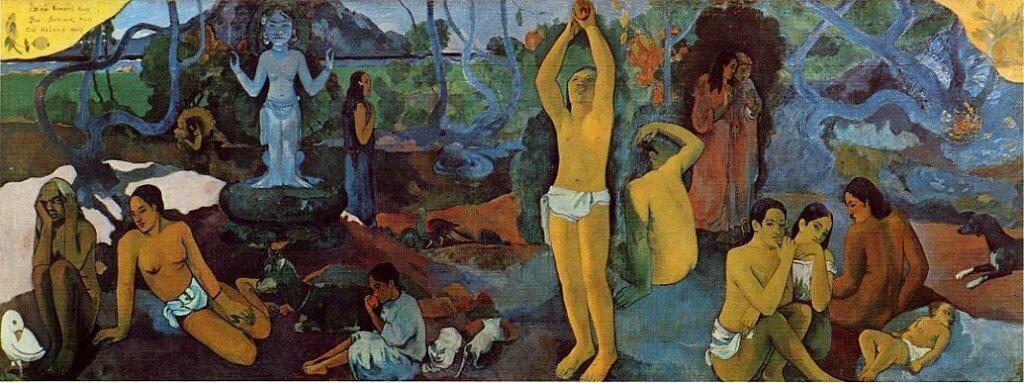
Gauguin, economically relieved when a painting seller began to send him a certain amount of monthly money, went to the Marquesas in 1901, but was also disappointed and opposed to the administration. In 1903, the church sentenced him to prison for provoking the public. In the same year, the painter died at the age of 54 as a result of a heart attack.
Paul Gauguin’s painting When Will You Marry Me painting was purchased by the Qatar Emirate in 2015 for the highest price ($ 300 million) ever given to an artwork.
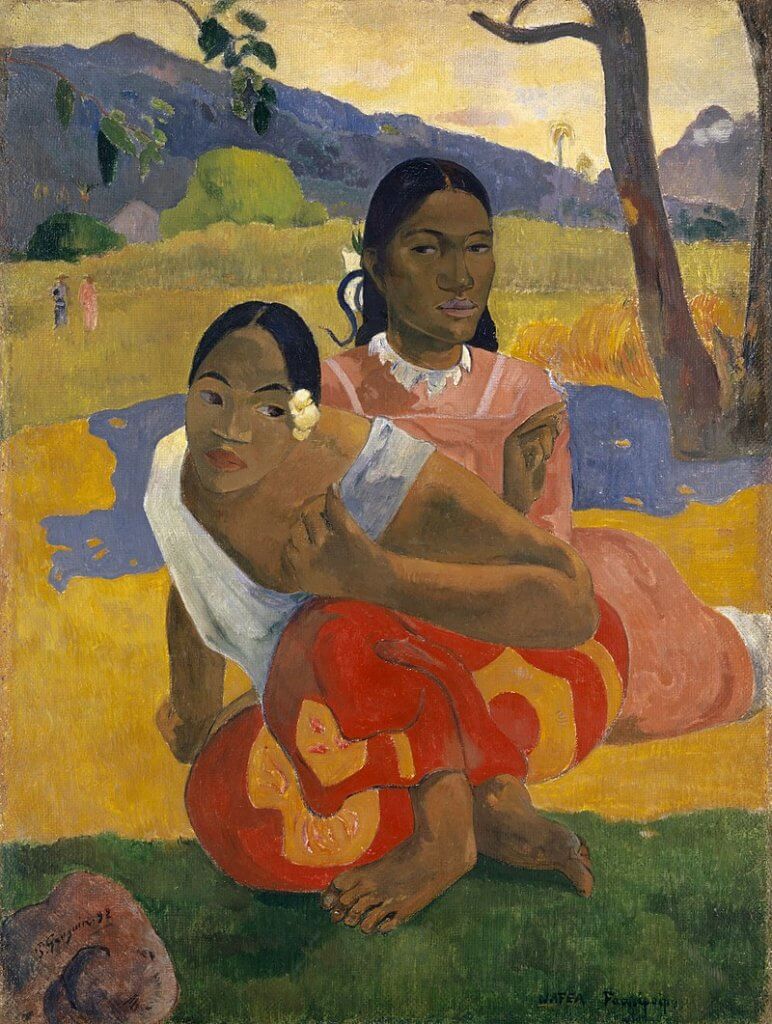
Sources:
- https://en.wikipedia.org/wiki/Paul_Gauguin#Family_history_and_early_life
- http://barisguner.blogspot.com/2011/01/paul-gauguin-1848-1903-19.html?m=1,
- http://www.leblebitozu.com/tahitili-kadinlariyla-paul-gauguinin-22-essiz-tablosu/
- https://www.artkolik.net/sanatcilar/paul-gauguin-kimdir-hayati-ve-sanatcinin-bilinmeyenleri-3660
- https://www.biography.com/.amp/artist/paul-gauguin
- https://en.wikipedia.org/wiki/List_of_paintings_by_Paul_Gauguin#1873%E2%80%931885_(Paris,_Rouen,_Copenhagen)
- https://en.wikipedia.org/wiki/Cloisonnism

